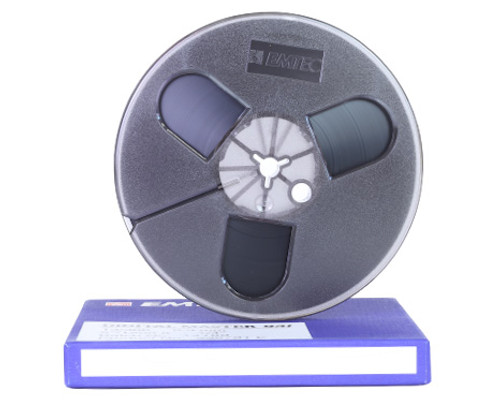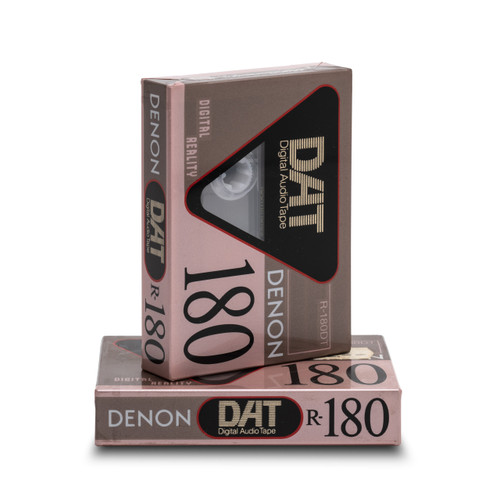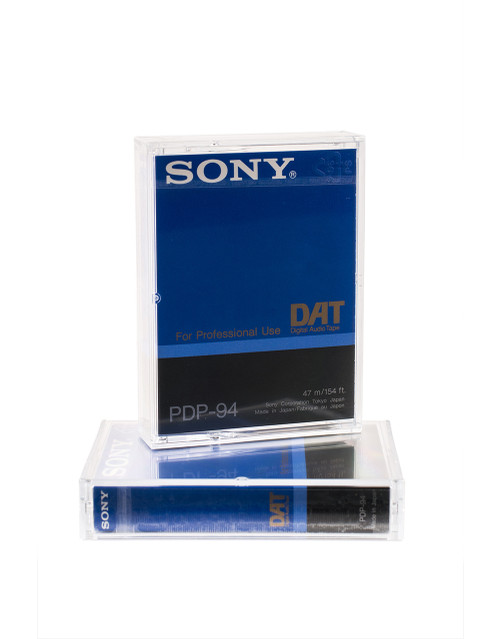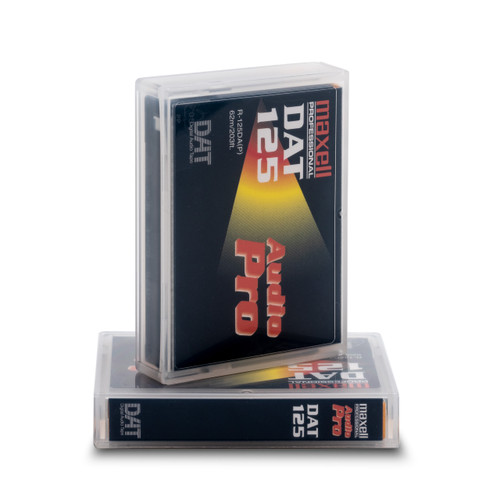The MX-2424 is an incredibly revolutionary product bringing together 24 tracks of 24 bit audio, a 12 track 96kHz recording mode, full synchronization capabilities, complete editing, a graphical user interface, and advanced SCSI recording and back-up capabilities. Add to that the OpenTL playlist which offers direct read and write compatibility with other DAWs and digital sequencers, a host of affordable archive options, plus the rock solid reliability of TASCAM products and you've got a beastie of a multitrack. Best of all, this recorder is priced within reach of the average musician.
• 24 Track, 24 Bit Hard Disk Recorder
• 12 Track Mode Allows 24 Bit / 96kHz High Resolution
• Unlimited Virtual Tracks
• 100 Point Auto-Locator Built-In
• TL-Bus Provides Sample Accurate Lock of 32 MX-2424 Machines For Up To 768 Sample Accurate Tracks
• Uses Macintosh™ and Windows™ Formatted Drives
• Uses Sound Designer II and .WAV Format Audio Files
• Built-In 9 Gigabyte Drive for Approximately 45 Minutes of Solid Record Time
• Front Panel Drive Bay Accepts Additional SCSI Drives, Removable Drive Carriers, or DVD-RAM for Back-up
• Rear Panel SCSI Wide Port Allows Connection of More Target Media or DVD-RAM/Tape Back-Up Drives
• Punch-In Port Accepts Alesis LRC for Transport Control ...and MUCH, MUCH MORE!!!
• 100MBit Ethernet Port For Interconnection with Computers for ViewNet GUI and Firmware Updates
• Standard AES/EBU and SPDIF Ports With Sample Rate Conversion
• SMPTE Time Code Generating and Chasing With In/Out/Thru Ports
• MIDI In/Out/Thru for MMC, MTC, MIDI Clock
• Word Sync In/Out/Thru
• Video Sync In/Thru
• Optional Analog I/O Offers 24 Channels of High Quality 24 Bit / 96kHz A/D and D/A
• Optional AES/EBU Card Offers 24 Channels of I/O, and is Compatible With Bit-Split or Fast 96kHz
• Optional TDIF and Lightpipe Multitrack Digital I/O
• Optional RC-2424 Remote Control
APPLICATIONS
Personal and Project Studios
Studios for hire are always under pressure to deliver state of the art sound quality on a shoe string budget. The MX-2424 brings aboard 24 tracks of 24 bit recording, plus a 12 track, 96kHz mode for the very best audio around. For time code applications, the MX-2424's time code chasing will keep accurate lock with any source. For flying audio tracks from verse to verse or compiling multiple takes into a single track, the on-board editing and unlimited virtual tracks will offer the ultimate flexibility. If you can't afford the remote, that's OK. You can access all of the recorder's functions from the front panel. If you still want to have a remote, you can use MMC from your sequencer or mixer, or plug in an Alesis LRC into the footswitch port for transport control. When moving projects between studios, total compatibility afforded by the OpenTL playlist with popular DAWs and digital sequencers make swapping projects to different platforms effortless. Plus, you can make affordable, robust back-ups with DVD-RAM and tape drives.
Post Production
In many professional studios, the MX-2424's video sync and word clock ports are needed for advanced synchronization as well as digital studio integration. For users who need multiple machines, synchronizing multiple MX-2424s together can be done with a simple TL-Bus cable. Plus, the same GUI (ViewNet) application can be used to address up to 65,000 individual MX-2424 machines on a single network. ViewNet can also handle machine set-up through user friendly screens. These machine set-up screens can also capture "profiles," so different studio set-ups can be stored for later use. Even better, these profiles can be broadcast to multiple machines simultaneously, saving a lot of repetitive motion. If you need 9-pin control, or want to achieve sample accurate lock between the MX-2424 and DTRS machines and/or ADATs, TASCAM's TL-SYNC will handle that and more. TL-SYNC also has an ethernet port on the back for profiles and set-ups on a computer.
PROVEN TECHNOLOGY
Hard disk recording technology is something that takes a serious investment in time and engineering. Plus, it takes real world testing to make sure the system is reliable and ready for the mass market. The MX-2424 is based on the TASCAM's MMR-8 film dubbers that have been in service since 1998. While you may not be familiar with these machines, you are familiar with what they have done and who is using them. The MMR line has been installed in numerous film and television production houses, including Skywalker Sound, Disney, Universal Studios, and other busy studios around the world. When you take the MX-2424 into your studio, you are getting a recorder that has benefited from roughly a decade of investment in technology and many years of proven reliability in demanding studio environments.
MX-2424 OPERATIONS
The MX-2424 is very easy to operate. The front panel and remote allow you to run the MX-2424 just like a reel to reel machine during tracking, yet still offers the editing features typically associated with advanced hard disk recorders. A great deal of effort has gone into making this interface accessible to the analog veteran, yet flexible enough for the editing power user. Standard tape functions will make tracking a breeze. Large, solid transport buttons allow the user to watch the talent, and not have to focus on locating the buttons. A dedicated matrix for input select and track arming keys, as well as "Select All" and "All Safe" functions make quick work of track status for overdub sessions. The 100 point auto locator makes project navigation a breeze. Plus, the Shuttle/Scrub wheel allows scrubbing of the audio just like scrubbing a reel of tape for easy location of really tight edit points. A machine set-up LED matrix gives complete indications of recording and time code status. Dedicated lights will show sample rate, time code frame rate, bit depth of recorded tracks, the format of the hard drive (Mac or PC), plus separate time code status for Word Clock, time code in, and TL-BUS Status. This efficient, yet complete matrix allows you to know exactly what the MX-2424 is configured for without looking at any menus. This is a tremendous time saver when setting up or troubleshooting. Editing is made easy. With 100 levels of undo, you can feel free to experiment with different versions without fear of losing your original version. Any edit you need to make is defined by an in and out point, and which track(s) you want the edit to affect. So, if you want to cut a vocal part out, place the in and out points around the part you want to remove, select that track for editing, then press clear. That's it. Any editing function can be made in a way that affects the time line of the project (ripple editing), or they can keep the time spacing the same (static editing). For example, when cutting a part from a vocal track as mentioned in the previous example, we want all the audio around that region to remain exactly where it was. However, if we were altering a drum loop, we may want all the audio after the edit point to meet up with the audio before the edit to avoid dead space. A simple example of this difference is Clear vs Delete. Clear removes the audio between the in and out points and replaces it with blank space, so the time line of the other events is not affected. However, Delete will remove any audio between the in and out points, and move all the audio after the edited region right up to the in point. Additionally, you can reference "sync points" when flying audio to perform "back-time" editing. When an edit is being made, the in and out point surround the audio you want to change. You can also create a marker within or outside of the audio region for the MX-2424 to line up the audio in the new point. For instance, if you are adding a car crash to your audio, the crash is the event you want to line up. So, place the in and out around the entire effect, then set a marker over the crash itself. Then, play the audio back and stop where you want the crash to be, and "Sync Paste" the part in. The MX-2424 will automatically calculate the in and out points for you. These types of advanced editing features work extremely well for both music and video applications.
I/O CONFIGURATIONS
Every studio is configured differently. Some people need analog I/O for interfacing with analog consoles or direct recording from mic preamps. Others need digital I/O for interfacing with digital consoles or transfers from MDMs (Modular Digital Multitracks) and DAWs (Digital Audio Workstations). Whatever your need, the MX-2424 can be configured to serve you. On the back panel of the MX-2424, there are two option slots. The top slot accepts the analog I/O card, and the bottom slot can accept any of the digital I/O cards. Digital cards are available in TDIF, Lightpipe, and AES/EBU formats. Note that analog and digital options can be installed and operated simultaneously. Standard on every MX-2424 is an AES/EBU I/O and SPDIF I/O. For convenience, these have sample rate conversion built-in, so you can freely import any digital two track information directly into your project. For the ultimate flexibility in a project, the analog card, digital card, and two track I/O's can all be used The AN-2424 analog I/O option offers 24 channels of balanced I/O on DB25 connectors. All A/D and D/A converters are 24 bit, 96kHz. Months of design and testing were dedicated to this card. Different capacitors were experimented with, high voltage power rails were installed, and lots of listening tests guided development of this I/O. It wasn't left to a theoretical oscilloscope experiment, this is first rate gear that will appeal to even the most die-hard analog aficionado. The AE-2424 AES/EBU module was designed with extra features making the card not just an I/O, but also an simultaneously. For instance, you can feed 8 channels of drum mics from a digital console into tracks 1-8, run a keyboard into the AES/EBU port to tracks 9-10, and lay down a vocal track fed from a mic preamp into the analog port of track 11, etc.. This kind of flexibility lets you focus on fulfilling the needs of your production, not figuring out the technical aspects of how to get there.
HARD DRIVES & BACK-UP OPTIONS
A whole bunch of ones and zeros, that's what digital recording boils down to. All of those ones and zeros need to be stored somewhere. The MX-2424 was designed from day one to offer inexpensive storage solutions, while still offering top performance and flexibility. The MX-2424 ships with an internal 9GB high performance SCSI drive. This internal drive is totally dedicated to audio; there is no firmware or operating system stored on this drive. If you want to replace it with a larger one, you can do so easily. Additional devices can be installed in the front panel drive bay of the MX-2424, or they can be connected to the rear panel SCSI port. (A list of approved drives is available on the TASCAM web site.) If you are in a busy studio where you need to move projects in and out quickly, or if you will want to take the drive out of the MX-2424 and mount it on a computer frequently, the Kingston Rhino Jr carrier might be the way to go. The Rhino Jr offers a protective carrier that can slide into a receiver to swap drives around. The Rhino Jr system also uses a quiet push-pull fan system to keep the drives cool in demanding situations. These drive sleds make swapping drives very simple, and they offer some protection to the drive while being carried around. The front panel has LED indicators for drive activity and SCSI ID number, plus a lock to prevent accidental removal. Also, since the MX-2424 uses standard Macintosh and Windows formatted drives, you can move the drive from the MX-2424 to the computer platform of your choice, and you can use any back-up media you choose. For many home users, the best option may be to take the internal drive out of the MX-2424, install it in a Rhino Jr carrier, and move it between the MX-2424 and the computer. (Remember, the MX-2424 does not need the internal hard drive for the operating system or firmware.) and perform to the specifications of the added drive. (Using non-LVD SCSI drives negates the added flexibility of the LVD standard, but this backwards compatibility really helps those who already made an investment in a collection of drives.) For those who have SCSI Narrow drives, the MX-2424 can also identify and use SCSI narrow drives with the appropriate terminations.
SYNCHRONIZATION
The MX-2424 has a powerful array of synchronization features built in to handle most any situation. In many studio applications, the recorder's synchronization capabilities will not only empower the MX-2424 to chase timecode from other sources, but it can also correct problems from other devices in the studio. If you need to lock up multiple MX-2424 recorders, the easiest and most accurate way to do that is through TL-Bus line. With TL-Bus, you can achieve sample accurate lock of up to 32 MX-2424 machines, offering 768 tracks of sample accurate recording, editing, and playback. The TL-Bus will also keep all the machines locked when scrubbing audio, so when the scrub and shuttle transport activates, all 32 machines will march together like soldiers. For times when you need to integrate with other recorders and players, SMPTE chasing and generating are standard on the MX-2424. This is an area where the MX-2424 really shines. Most DAWs and digital sequencers offer the ability to chase time code. But unless additional hardware is purchased, all these stations are doing is timing the start of the audio. From that point on, there is no clocking of the audio track to the time code. It is very similar to pressing a trigger on a sampler. This can cause serious drift on longer regions over time if you are locking to unstable sources. The MX-2424 can actually derive a word clock from the incoming time code and reclock the audio. This way, no matter how long the audio regions get, the MX-2424 will keep your audio locked in time with video machines, two inch analog machines, or whatever you've got. The time code out of the MX-2424 can be used to broadcast time code if the MX-2424 is the master. It can also be used to generate an offset from incoming time code, or to re-shape deteriorated time code from old tapes. These additional features can keep a session on track that would have otherwise come to a screeching halt. The time code thru port is hard wired to the time code in. This passes the incoming time code to another device without any delay. This is handy if you don't have a time code distributor or are simply adding one more device in the studio temporarily. If you try to go from the time code in to the out on most recorders, the time code must pass through the time code engine. There, the engine processes the incoming time code, and regenerates the code for the output. This process of regenerating the time code induces what is called propagation delay. Each machine that is added to the line adds a little more delay which can create a noticeable problem with very few patches. The time code thru port avoids this problem by hard wiring the thru to the in, thereby avoiding the time code engine itself. MIDI ports are available for MMC (MIDI Machine Control), MTC (MIDI Time Code) and MIDI Clock applications. This is handy for users who want to use the MX-2424 with MIDI sequencers. You do not have to use a track for striping time code, and you don't have to buy an extra box to generate the code. It's all built in. As an added bonus, the MX-2424 can also chase MIDI Time Code. Most professionals know that SMPTE is much more accurate than MTC and therefore would never suggest chasing MTC. At the same time, most professionals will remember sessions where they had to jerry-rig something. (This is especially true at the project studio level.) Think of this as insurance that you won't get stuck is a session where MTC is the only choice. The MX-2424 is the "yes-you-can" box. Word Clock in, out and thru are available to help integrate the MX-2424 into larger digital environments. As with the time code ports, dedicated in, out and thru ports are available for professional flexibility. Video Sync is available for users working in post production for television and film for locking to blackburst. Dedicated in and thru ports are available for capturing and passing the signal down the line. MIDI ports allow the MX-2424 to respond to MMC (MIDI Machine Control), generate MIDI Clock, as well as generate and lock to MTC (MIDI Time Code.) Video Sync is standard for video applications that require sync to blackburst. Time Code IN, OUT and THRU ports can be used to generate and chase SMPTE time code, as well as regenerate degraded code and create offsets. Unlike many budget hard disk recording systems, the audio is constantly reclocked in reference to the time code, allowing the most accurate time code chase possible. Also, the THRU port is available for passing time code from the in port without any propagation delay. Word Clock IN, OUT and THRU are all on board to enable integration into larger digital audio environments. TL-Bus allows sample accurate lock of up to 32 MX-2424s. Sample accurate lock applies not only for general play, but also when engaging the machines in shuttle and scrub for editing or scanning.



















